Noah: One of Many Animal Hoarders Throughout History
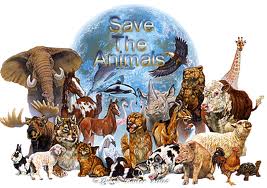
It may appear to the casual observer that animal hoarding is a relatively new development in the recognized psychosis of people, but the fact is, animal hoarding has been around for a long time. Officially considered an Obsessive Compulsive Disorder, it has been existent since before we had “psychosis,” or a term to describe the behavior of hoarding. In other words, people had it, but we didn't know what it was.
Of course, there are more people populating the earth these days, so perhaps it's not surprising that approximately 1500 cases of animal hoarding are reported in the U.S. per year. It doesn't seem like that widespread of a problem when you look at it by the numbers, but it's a serious matter indeed, and when we compare the population numbers historically to today's population, we would find the number of hoarders relative, and not beyond the realm of believability. Furthermore, it's logical that the illness would have afflicted persons from history who, for whatever reason, are known to us.
Here, I will submit evidence of animal hoarding that existed a very long time ago indeed, not only in well known historical figures, but in entire societies. Also, a major discovery is that some geographic areas are more susceptible to hoarding. George Santayana said, "Those who cannot remember the past are condemned to repeat it." Perhaps by looking at animal hoarding from the past, we can begin to understand the causes of animal hoarding now and how best to eliminate it.

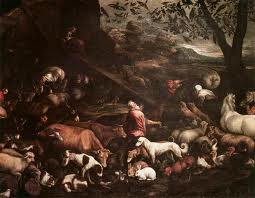
Case #1: Noah
Where: Southern Tigris-Euphrates valley
When: Around 5500 hundred B.C., or 2900 B.C., depending on who you're talking to.
What: Police reports from the era indicate that Noah hoarded two of every animal on Earth. That's a lot of beasts. One of the major problems with animal hoarding is the lack of care the hoarder can provide for the animals. Noah must have had some difficulty feeding them, not to mention the excrement situation. The report indicates that the BSPCA (Biblical Society for the Prevention of Cruelty to Animals) was denied access to the barn – which Noah called an ark – to check on the animals well being. Initially, the report continues, the animals were not provided adequate water, though the water situation was later remedied.
Though undoubtedly Noah suffered from some mental problems, the large number of beasts did not apparently affect his health. He lived for 950 years...or 83 years, again depending on who you're talking to, but still...

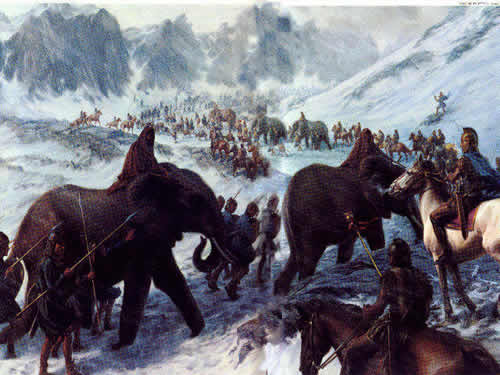
Case #2: Hannabal
Where: Carthegenia
When: 248 B.C to 183 or 182 B.C.
What: Hannibal was OC in several ways. Not only did he have to fight, win, and conquer, he also was an animal hoarder. Often today hoarding can be breed specific. Someone may only hoard cats, for example, or dogs. Hannibal was breed specific as well, but his hoarding was on a whole different level. In line with his massive ego and huge ambition, his animals were large too. Hannibal hoarded elephants. Everything about Hannibal was king sized, including the problems these magnificent pachyderms presented due to inadequate space, food, and hygiene.
The report reads like a classic example of hoarding on steroids. So OC was he, that as agents closed in to shut down his operation, he fled over the alps to escape the authorities. Unfortunately, he ran into the Romans, who, failing to reform him and his hoarding ways, routed him. His hired help and been unable to defend themselves as half of them carried giant pooper scoopers instead of weapons. The resulting publicity of his hoarding was devastating, and he was fired by the Carthegenians and spent the remainder of his days trying to get a job leading other armies and hoarding more elephants.

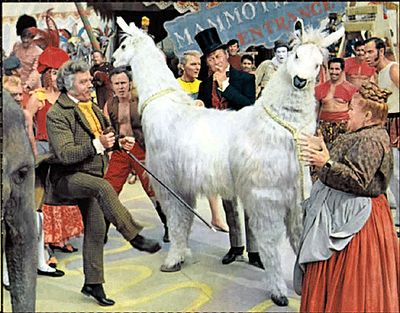
Case #3: Dr. Dolittle
Where: Puddleby-on-the-Marsh
When: Victorian England, around 1820
What: Animal control agent and author Hugh Lofting first documented this bizarre case of a Doctor who hoarded animals. In many ways, he is the poster boy for the psychological problems associated with animal hoarding. He actually began to believe that he could talk to animals and that the animals understood him. Furthermore, the animals could communicate with him as well, but not in human speech. Eventually, Dolittle became so obsessed with his hoard that he completely shunned his human patients in favor of animals, who presumably paid him with animal knowledge instead of funds.
Finally, animal control agents raided Dolittle's medical offices in 1952. He was charged with animal cruelty and served time in prison. Many of the animals were relocated to safari parks around the world. The picture to the right documents the ill health effects on the animals themselves, who were found filling various examination rooms and the lobby area. Some of the animals had radiation poison because the monkey, Chee-Chee, repeatedly took pictures of the other animals with the x-ray machine. Some of the animals were malformed, such as the two-headed llama pictured.

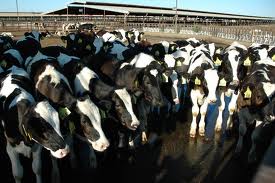
Case #4: Farmers
Where: Just about everywhere.
When: Since about 32,000 years ago.
What: Farmer's is the rare case of an entire group of people who suffer from animal hoarding. Oddly, they are known to actually eat the animals they hoard. There is strong evidence that farmers are susceptible to hoarding particular breeds. Commonly these include cattle, pigs, goats, sheep, foul, sometimes fish, and rarely, worms. While it is difficult to ascertain when farmers began hoarding, it is known that the first animal to be domesticated is the dog 32,000 years ago. That would indicate that the first hoarded animal to be eaten was 9 weeks later.
Anthropologists aren't sure what contributes to the hoarding of animals by farmers regardless of geographical location. Symposiums have been held on the matter, but currently, the scientific world is dumbfounded by this universal behavior. In a recent discovery, further adding to the confusion and mystery of the situation, farmers have been exposed as crop hoarders as well.

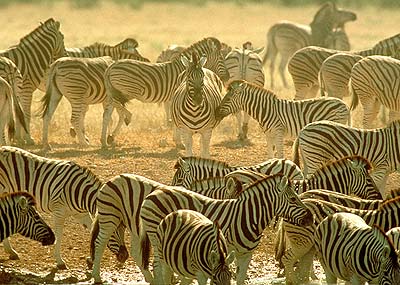
Case #5: African Continent
Case #6: African Continent
When: On the sixth day.
Where: Africa, mostly in areas called reserves.
What: God created the earth on the first day, so presumably that included Africa, unless he forgot Africa and had to go back later. Then on the sixth day he created animals, which he put in Africa. This is the first known case of an entire continent being brought up on charges of animal hoarding. Court papers claim there are 167 species of animals in Africa.
Africa claims they are getting help for their hoarding problem by implementing loss of habitat, poaching, and devastating drought. While these efforts are showing signs of reducing the numbers of hoarded animals on the continent, they still have a lot of animals.
Conclusion: These cases document the true extent of animal hoarding, by people, groups, and entire continents. Scientists will continue to study hoarding in order to increase awareness and education of this very real issue. Hopefully, by looking at its history and some indisputable facts, such as those presented herein, animal hoarding can be eliminated.
NOTE FROM THE WHATCHAMACALLIT: Animal hoarding is a serious problem and a real issue. If you suspect you are a hoarder, or you want to report hoarding, contact your local humane society. They can also recommend professionals for psychiatric consultation. You can obtain more information on hoarding by visiting HARC. You can also get information and help at animalhoarding.com.








